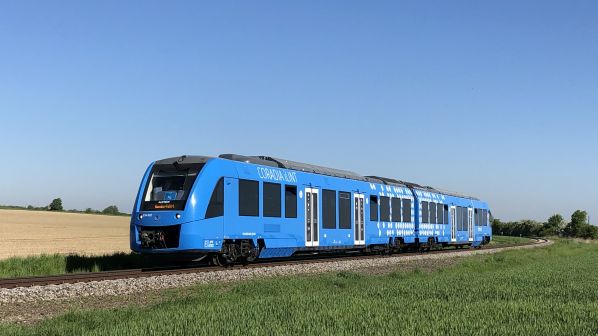HYDROGEN trains began operating on the regional rail line from Cuxhaven to Buxtehude via Bremervörde, west of Hamburg, on July 25, the first time hydrogen traction has been used in regular passenger service.
Lower Saxony Transport Authority (LNVG) signed a contract with Alstom to supply the fleet of 14 two-car iLint trains in November 2017. Elbe-Weser Transport Company (EVB) will initially operate the trains, which have a maximum speed of 140km/h, on behalf of LNVG on the 100km line between Cuxhaven and Buxtehude.
The trains were built in Germany at Alstom’s Salzgitter facility and purchased by the state of Lower Saxony, which is leasing them to EVB, which is also owned by the state.
The trains cost €85m, including a 30-year maintenance contract, with the cost partially covered by the German government.
The hydrogen-powered service has been described as a “preliminary,” as the DMUs that previously operated on the line have been held in reserve in case of problems with the introduction of the hydrogen fleet. Once the required level of reliability has been achieved, a public launch and inauguration by the minister-president of Lower Saxony is planned, which is expected to be held later this summer.
The trains are based at the EVB depot in Bremervörde where a hydrogen fuelling station has been installed. This currently uses hydrogen supplied by the chemical industry, but is expected to switch by 2024 to “green hydrogen” produced by electrolysis of water using power generated by solar panels and wind turbines.
The iLint was first launched by Alstom at the InnoTrans trade fair in Berlin in 2016. Test operation on the EVB line began in 2018, with the two prototype trains subsequently tested and displayed across Europe.

